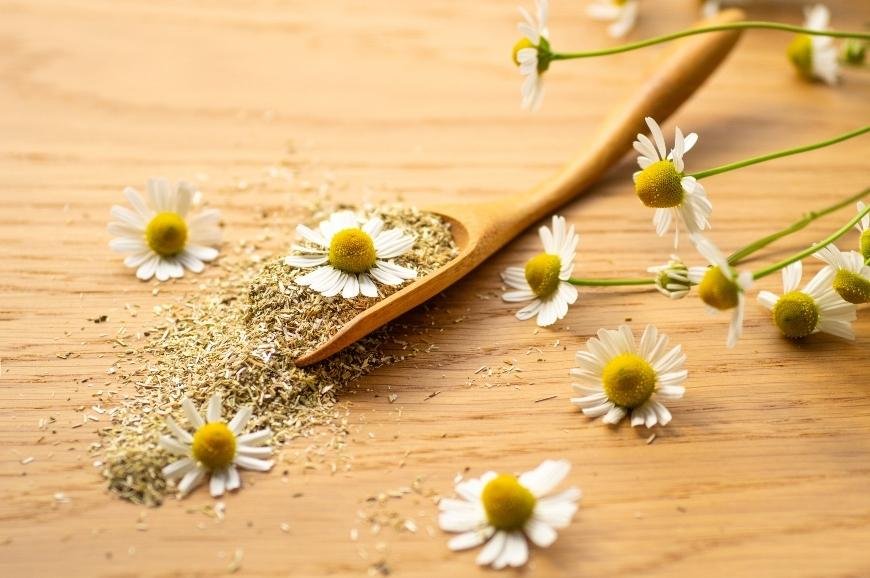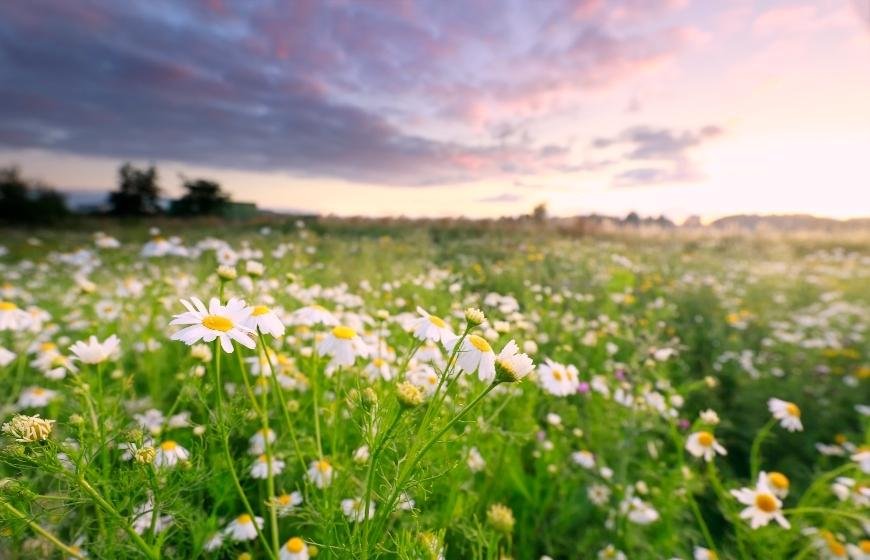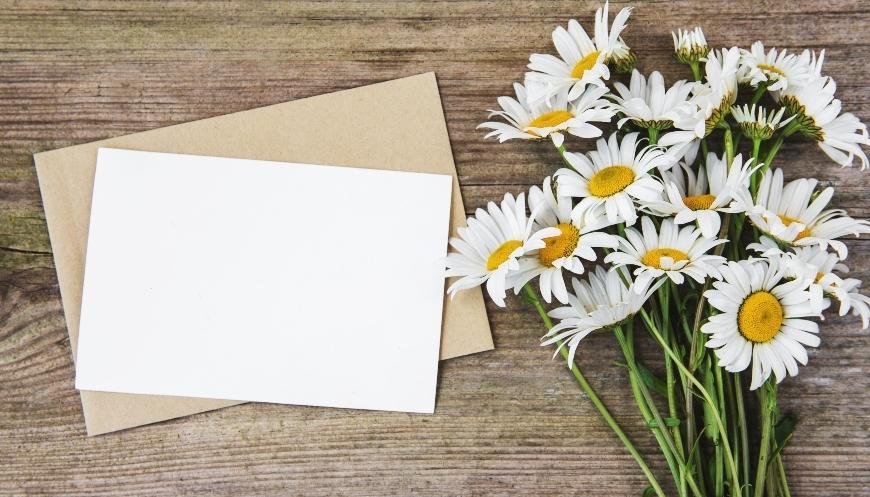How to Grow Chamomile
Discover how to grow chamomile with our comprehensive guide for beginners, covering seed selection, soil preparation, planting tips, and harvesting methods.

Learning how to grow chamomile can be an exciting and rewarding experience, especially for those who appreciate the soothing effects of this herbal remedy. In this detailed guide, we'll explore the various components of cultivating chamomile successfully in your garden.
We'll begin by discussing how to select the right chamomile seeds, whether you prefer common German Chamomile (Matricaria chamomilla) or Roman Chamomile (Chamaemelum nobile). Next, we'll cover essential steps such as preparing the soil and planting chamomile seeds for optimal growth.
Additionally, our guide on how to grow chamomile will provide valuable insights into proper watering and fertilizing techniques, controlling weeds and pests that may hinder your plants' progress, and finally harvesting your fresh flowers at just the right time. We'll also explore various uses for both fresh and dried flowers from your homegrown chamomile plants.
By following these detailed instructions closely, you'll soon enjoy a bountiful harvest of calming chamomile tea or other therapeutic applications from your very own vegetable garden.
Table of Contents:
- Choosing the Right Chamomile Seeds
- Finding Quality Seeds
- Preparing the Soil for Chamomile
- Controlling Weeds and Pests
- Harvesting Chamomile
- Uses for Chamomile
- FAQs in Relation to How to Grow Chamomile
- Conclusion
Choosing the Right Chamomile Seeds
Want to grow chamomile? You need to pick the right seeds - Roman chamomile or German chamomile.
- Roman chamomile is a low-growing perennial that forms a dense mat of foliage, making it an excellent ground cover or addition to rock gardens.
- German chamomile, a taller annual plant with more flowers, may be better suited for certain growing conditions and spaces.
Consider your available space and growing conditions to decide which variety is best for you.
Finding Quality Seeds
Healthy chamomile plants start with quality seeds from reputable suppliers.
- Look for certified organic and non-GMO options from reputable seed suppliers online.
- Read customer reviews to gather insights about potential issues faced during the growing process.
Seeds in hand, you'll be ready to cultivate your own chamomile for a delicious tea or natural remedy.
Preparing the Soil for Chamomile

Test your soil's pH level and adjust it accordingly by adding sulfur or peat moss for acidity, or lime or wood ash for alkaline soils to ensure chamomile grows best in well-draining sandy loam soil with a pH between 5.6 and 7.5. Adjust the pH level by adding sulfur or peat moss for acidity, or lime or wood ash for alkaline soils. Improve drainage in clay-heavy soils by mixing in coarse sand or perlite, and enhance moisture retention in sandy soils by blending organic matter like compost or aged manure into the top layer of soil. Before planting chamomile seeds outdoors during their ideal growing season (spring), make sure there is no risk of frost as this can damage young seedlings. If you live in colder climates, start seeds indoors approximately six weeks before transplanting them outside once temperatures stabilize above freezing at night. For successful germination, lightly till the surface of your prepared vegetable garden bed so that it's loose and free from large clumps. Keep your delicate chamomile seedlings from being smothered by heavy dirt when they begin sprouting.
Planting Chamomile Seeds
Ready to grow your own chamomile garden? Here's what you need to know:
Choose the Right Time
Plant chamomile seeds in early spring after the last frost has passed.
Select an Ideal Location
Plant chamomile enjoys sunny spots and soil that drains quickly.
Sow Your Seeds
Sow the chamomile seeds spaced at 6 inches apart, lightly pressing them into the dirt.
Keep Them Moist
Water the seeded area gently until seedlings emerge, usually within 10-14 days.
Eager for faster results?
You can start your seeds indoors 6 weeks before transplanting outdoors for earlier blooms.
With proper care, you'll soon have beautiful chamomile blossoms ready for harvest. Use them for their calming and soothing properties in teas, skincare, and more.
Watering and Fertilizing
Chamomile is easy to grow, but don't drown your plants - they prefer moderately moist soil.
Water once every 7-10 days during dry periods or when the top inch of soil feels dry to the touch.
For fertilizing, chamomile isn't too picky, but adding organic matter before planting will give your plants a boost.
Use an all-purpose balanced fertilizer at half strength once a month during the growing season.
- Avoid high-nitrogen fertilizers as they promote leafy growth instead of flowers.
- Mulching around your chamomile plants helps retain moisture in the soil while suppressing weeds.
For optimal growth, chamomile should be kept in temperatures between 60°F and 70°F (15°C and 21°C) with full sun exposure.
Keep an eye on local weather conditions to ensure healthy plant development.
Controlling Weeds and Pests
Don't let pesky weeds and insects ruin your chamomile garden - here's how to keep them at bay naturally.
A. Identifying Common Weeds
Dandelions, crabgrass, and chickweed are common culprits that compete with your chamomile plants for resources.
- Mulch with organic materials like straw or wood chips to prevent weed growth.
- Hand-pull or hoe emerging weeds regularly.
B. Managing Insect Pests
Aphids and spider mites can suck the life out of your chamomile plants, but you can fight back with these eco-friendly methods:
- Introduce beneficial insects like ladybugs or lacewings to prey on harmful bugs.
- Spray affected areas with a homemade solution of soapy water (1-2 teaspoons mild dish soap per gallon of water).
C. Preventing Disease
Keep your chamomile plants healthy by minimizing the risk of diseases like powdery mildew:
- Ensure proper spacing between plants for good air circulation.
- Water at ground level rather than overhead to reduce humidity around plant foliage.
Implement these strategies to ensure a thriving chamomile garden without resorting to chemicals. Happy growing.
Harvesting Chamomile

Get the best quality chamomile for your homemade remedies by knowing when and how to harvest it.
When to Harvest
Harvest chamomile flowers during mid-morning after the dew has dried when they are fully open and at their peak potency.
How to Harvest
- Picking Flowers: Pinch off each flower head just below its base where it meets the stem.
- Gathering Leaves: Snip off young tender leaves near their attachment point on the stem.
- Digging Roots: Dig around the base of mature plants carefully with a small gardening tool until you can gently lift out an intact root system from beneath the soil surface.
Storing Chamomile After Harvesting
To maintain freshness and potency:
- Drying: Air-dry the harvested flowers, leaves, or roots for several days until they feel dry and brittle to touch.
- Storing: Transfer your chamomile harvest into airtight glass containers, label each container with the date of harvest and store it in a cool, dark place away from heat sources or direct sunlight.
Your homegrown chamomile is now ready for use. Elevate your homemade creations with these freshly harvested ingredients.
Uses for Chamomile
Chamomile is a versatile herb with soothing and calming properties that has been popular for centuries.
A. Chamomile Tea
Chamomile tea, known for its calming effects and potential to reduce stress, induce sleep, and ease digestion issues, is a popular way to use this herb. Make it yourself by picking fresh chamomile flowers, rinsing them, adding them to boiling water, and steeping for five minutes before straining and sweetening if desired.
B. Tinctures & Oils
Create tinctures and oils using chamomile's beneficial properties by infusing it into alcohol or carrier oil like coconut or olive oil. Make a simple chamomile tincture by filling a jar with flowers, covering with high-proof alcohol, letting it sit for four weeks, then straining and storing in a dark glass dropper bottle.
C. Salves & Skincare
Chamomile's soothing properties make it an excellent addition to homemade salves and skincare products. Create a chamomile-imbued oil by steeping carrier oil with chamomile blossoms, then utilize it as the foundation for salves, creams, or lip ointments.
Explore all that chamomile has to offer and enjoy its calming benefits right from your own garden.
FAQs in Relation to How to Grow Chamomile
What is the best way to grow chamomile?
The best way to grow chamomile is by starting with high-quality seeds, preparing well-draining soil with a pH of 5.6-7.5, and planting them in a sunny location. Water regularly but avoid overwatering, and use organic fertilizers if needed. Keep an eye on weeds and pests for healthy growth.
How easy is it to grow chamomile?
Chamomile is relatively easy to grow as it requires minimal maintenance once established. It can adapt to various climates and soil types, making it suitable for beginners or experienced gardeners looking for low-maintenance plants.
How long does it take for chamomile to fully grow?
Chamomile typically takes around 8-10 weeks from seed sowing until harvest time when flowers are fully bloomed. The plant will continue producing blooms throughout the growing season if you keep harvesting the flowers regularly.
What is the best climate to grow chamomile?
Chamomile thrives in temperate climates with cool summers and mild winters; however, it can also adapt well in warmer regions provided there's adequate moisture during dry spells. Full sun exposure helps promote optimal growth.
Conclusion
Add beauty and fragrance to your garden while enjoying the medicinal benefits of chamomile by selecting the right seeds, preparing the soil, planting, watering, fertilizing, controlling pests, and harvesting when ready.
For a successful harvest, start by selecting high-quality chamomile seeds and preparing the soil with compost or well-rotted manure.
Plant the seeds in a sunny location and water regularly, making sure the soil stays moist but not waterlogged.
Fertilize with a balanced fertilizer every few weeks to promote healthy growth.
Control weeds and pests by handpicking or using organic methods such as neem oil or insecticidal soap.
Harvest the flowers when they are fully open and dry them in a warm, dark place before storing in an airtight container.
Enjoy fresh chamomile tea or use the dried flowers in a variety of other ways.


































































































































